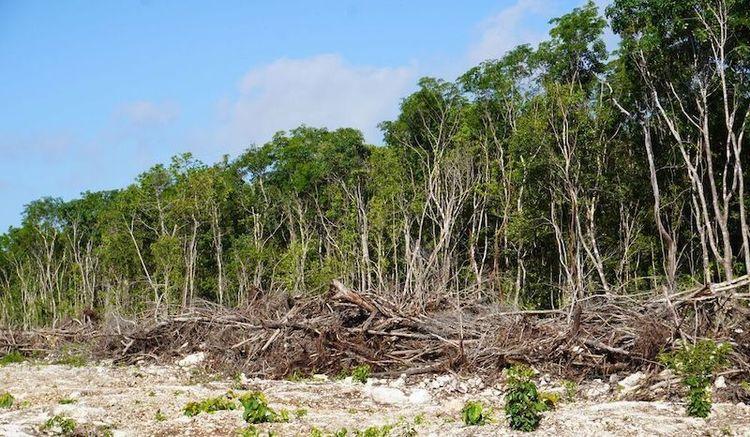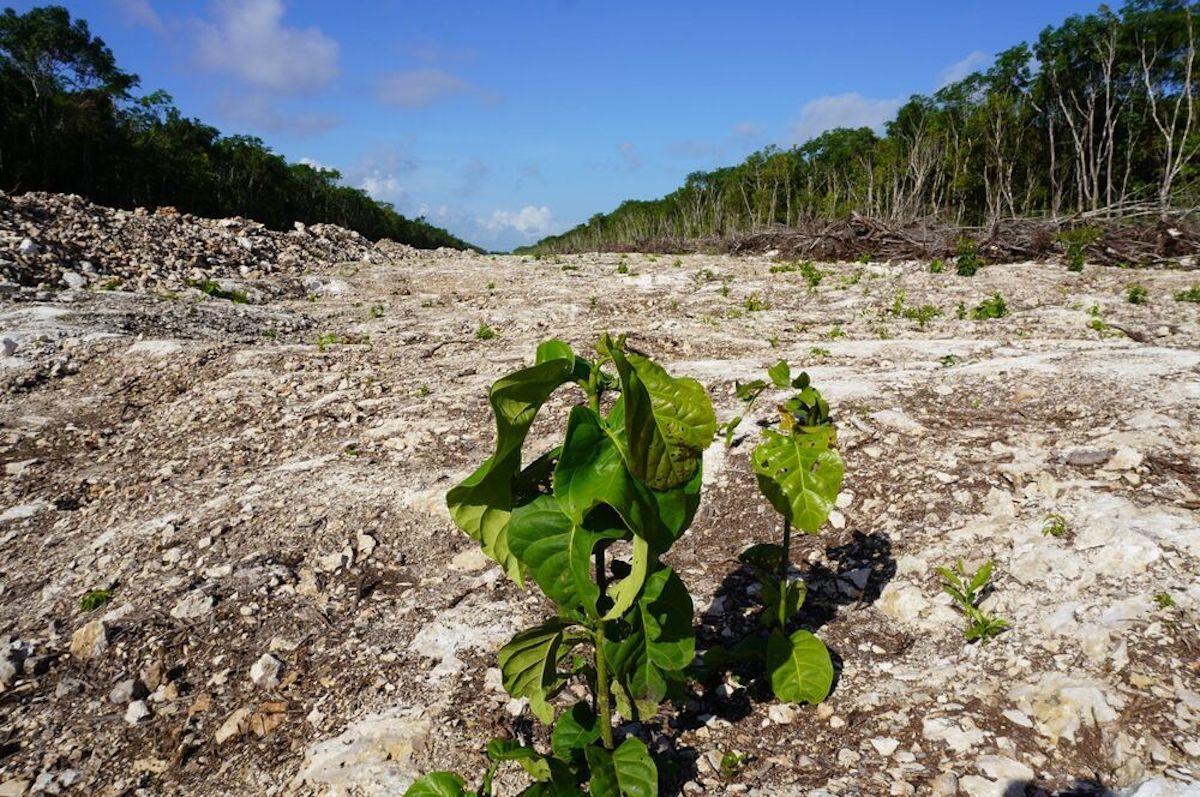The depths where archaeologists and divers barely reached are today the roads of the Mayan Train. After four years of construction, the federal megaproject has run into caves, cenotes and archaeological pieces, many of which are not being treated properly or belong to regions where they should not be built, according to complaints from experts and groups.
The most recent case is the Dama Blanca cave (or cenote), registered in February last year by the Maya Train Archaeological Rescue Project, as part of the work of Section 5 South, which runs from Playa del Carmen to Tulum. The cave is part of a complex of ancient habitational monuments.
At the end of last April, a group of divers from the Sélvame del Tren collective reported that the White Lady was being filled with stone. A construction measure to prevent subsidence due to the hollow and porous shape of the soil formed by the cenotes and tunnels characteristic of the Yucatan Peninsula.
On May 1, the National Institute of Anthropology and History (INAH) responded in a statement denying damage and assuring that prevention measures were being worked on. A week later, the statements of Diego Prieto Hernández, head of the institute, were added during the morning presidential conference.
“We didn't find anything, it's intact,” Prieto summarized.
The Sélvame del Tren collective responded to the statement with images from before and after the buildings. To this, legal and media complaints have been added since months ago with images of filled cenotes or collapsed construction pilates, but despite this, the project is still ongoing.

Section 5 of the Maya Train. Photo: Elizabeth Ruíz/Cuartoscuro
The INAH statements not only attracted the attention of environmental defense groups, but also of researchers who have even worked with the institute. One of them is Sergio Grosjean, an explorer and underwater archaeologist in the Yucatan Peninsula.
“It's incredible that (the INAH) says that there are no impacts of the Maya Train because if we talk about Southern Section 5, it's an area where very important archaeological and paleontological findings have been made,” Grosjean said.
For the archaeologist, entering this area with a megaproject represents a lack of knowledge and preparation on the part of the authorities. “It could have happened (the train) looking for less affected areas, but they want to put it exactly at the heart of this system, which, in addition, is one of the most important freshwater systems we have,” he said.
Like the current impacts, there are also concerns that in the future there will be faults or collapses in the works due to the place where they are built.
One of the peculiarities of southeastern Mexico, in the states of Yucatán and Quintana Roo, is karst soil. Karst is a rock material, mainly limestone or gypsum, fragile compared to others. It also has a network of cenotes and caves in the subsoil.
Despite the structure, only this section passes over three cenotes, as well as caves and underground rivers, according to an analysis of the regional Environmental Impact Manifestation (MIA) of Southern Section 5, prepared by the Center for Biological Diversity. Although the authorities' argument has been that viaducts are being built to pass overhead and not alter the ecosystem.
The analysis highlights the lack of rigorous studies. Last year, the Ministry of Environment and Natural Resources approved the MIA in a month, after the works were stopped because it did not have this document, an unusually fast time for this type of mandatory procedure.
“In the same way, the CG-05 criterion states that the developer should have submitted an environmental zoning study that demonstrated the best location of the infrastructure for the project. However, the developer did not present an evaluation or analysis of alternatives, in addition to the fact that the main route of the Maya Train Section 5 South was modified (this news was released on January 19, 2022)”, indicates the civil organization's document.
The Center for Biological Diversity also proposes that responsible agencies request that the route be changed to one that includes studies of the entire route, “especially of large underground cave systems” to locate karst risk points.

Floor of Section 5 of the Maya Train. Photo: Elizabeth Ruíz/Cuartoscuro.
Despite this, the authorities' discourse is that there is and will not be any damage.
“Nothing is built that affects archaeological remains. An archaeological rescue like the one being carried out with the Mayan Train has never been carried out in the history of Mexico; everything is being respected,” President Andrés Manuel López Obrador recently said at a morning conference.
“Cenotes have been recognized as important in the coastal ecosystem, in urban development programs, in regulations, but not as strongly as they should,” said Antonella Vázquez, a lawyer with Defending the Right to a Healthy Environment, A.C. (DMAS), an organization that last year filed a lawsuit with divers over the impact of construction.
In the meantime, the complaints are still awaiting a resolution. It is estimated that to date there are more than 50 amparos. But even those that have achieved suspensions do not stop the works.



Comentarios (0)